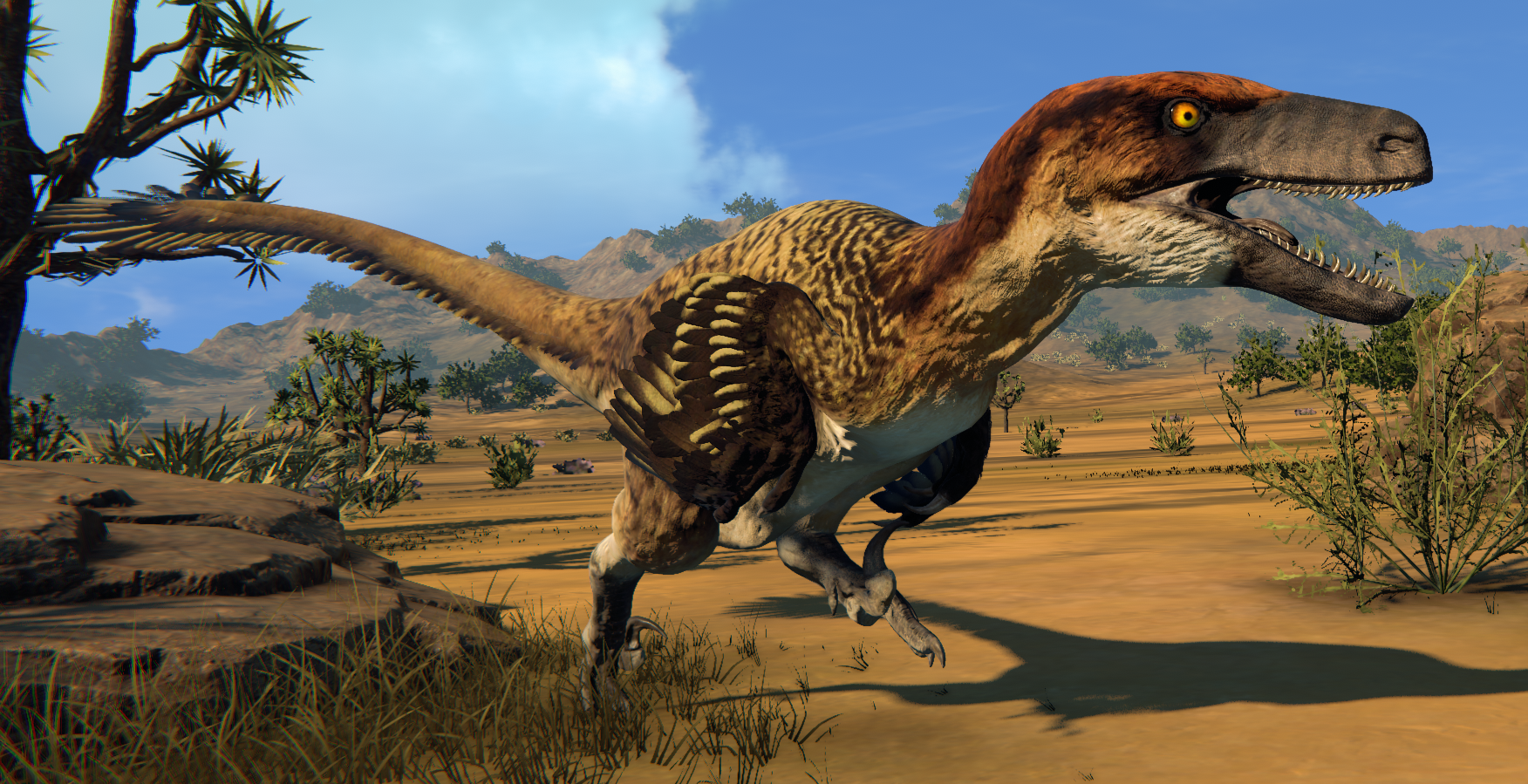

In a 2001 study conducted by Bruce Rothschild and other paleontologists, two foot bones referred to Utahraptor were examined for signs of stress fracture, but none were found. So far, there is nothing to suggest that feathers were lost in larger, more derived species of dromaeosaurs. Feathers were very unlikely to have evolved more than once, so assuming that any given dromaeosaurid, such as Utahraptor, lacked feathers would require positive evidence that they did not have them. Since Microraptor and other dromaeosaurids possessed feathers, it is reasonable to assume that this trait was present in all of Dromaeosauridae. The genus Microraptor is one of the oldest-known dromaeosaurids, and is phylogenetically more primitive than Utahraptor. This evidence comes from phylogenetic bracketing, which allows paleontologists to infer traits that exist in a clade based on the existence of that trait in a more basal form.

It is thought that Utahraptor is closely related to the smaller Dromaeosaurus and the giant Mongolian and North American dromaeosaurid genera Achillobator and Dakotaraptor, based on cladistic analysis.Īlthough feathers have never been found in association with Utahraptor specimens, there is strong phylogenetic evidence suggesting that all dromaeosaurids possessed them. However, the 2001 Kirkland discovery indicates the species may be far heavier than previously estimated. ostrommaysorum specimens are estimated to have reached up to 5.7 meters (19 ft) long and somewhat less than 500 kilograms (1,100 lb) in weight, comparable to a grizzly bear or polar bear in size. One claw specimen is preserved at 22 centimeters (8.7 in) in length and is thought to reach 24 cm (9.4 in) restored. Like other dromaeosaurids, Utahraptor had large curved claws on their second toes.

These few elements suggest an animal about twice the length of Deinonychus. The holotype specimen of Utahraptor is fragmentary, consisting of skull fragments, a tibia, claws and some caudal (tail) vertebrae. Initially Utahraptor would have replaced another dinosaur, the Allosaurus, as the state's official fossil, but it was decided that Utahraptor would be another symbol of the state. In 2018, it was proposed that Utahraptor be the Utah state dinosaur, an act that was approved by the Senate. Fossil specimens date to the upper Barremian stage of the early Cretaceous period (in rock strata dated to 126 ± 2.5 million years ago). It contains a single species, Utahraptor ostrommaysorum, which is the largest-known member of the family Dromaeosauridae. Dinoraptor was considered to be the genus name before Utahraptor.Utahraptor (meaning "Utah's predator" or "Utah's thief") is a genus of theropod dinosaurs. At that time the palaeontologists that were describing the dinosaur considered naming it Utahraptor spielbergi after Jurassic Park's director Steven Spielberg in exchange for funding support but ultimately it was decided to name it Utahraptor ostrommaysi in honour to the paleontologist John Ostrom. Utahraptor was named in 1993, ironically the same year as the release of the film Jurassic Park which depicted Velociraptor in a size closer to that of Utahraptor, by paleontologist James Ian Kirkland and its name means "Utah's thief".
#Prehistoric kingdom utahraptor skin#
Like all other dromaeosaurs, its body is covered in feathers, except for the Stark skin which possesses a featherless head and neck, similar to a vulture. Utahraptor is a large dromaeosaur that compared to other dinosaurs in its family group, such as Velociraptor and Deinonychus, is heavily built and its leg are much thicker and relatively short.


 0 kommentar(er)
0 kommentar(er)
